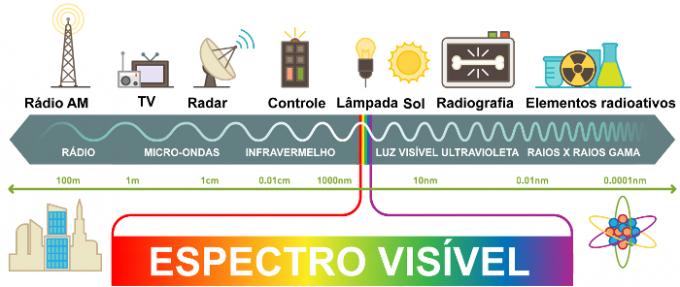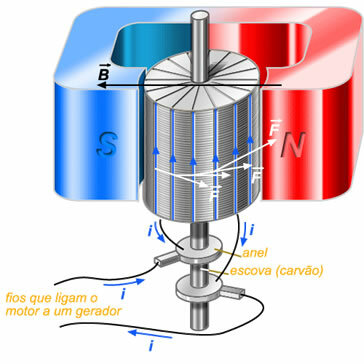In our studies of plane mirrors we saw that they are flat polished surfaces that reflect the image of an object. According to the law of reflection, the incident ray, the straight line normal to the mirror plane surface, and the reflected ray belong to the same plane and the incident angle is congruent with the reflection angle.
Thus, a plane mirror combines a virtual image, right and of the same size as the object, with this image being positioned symmetrically to the object in relation to the mirror plane, that is, the image has the same distance from the mirror in relation to the distance of the object to the mirror. Let's see the figure above: in it we have a ray of light that falls on the flat surface of the mirror fixed at point O. We can see that the ray is reflected exactly following the second law of reflection.

See the figure above: in it we can see that in position 1 we have an incident light ray (Ri) and that Rr1 is the reflected ray. If we make the mirror rotate about the fixed point O an angle α we see that the same incident ray Ri individualizes the reflected ray Rr
2, now with the mirror in position 2, as shown in the figure above.Do not stop now... There's more after the advertising ;)
According to the figure, we have, for the trajectory described by the ray, that:
I1is the point where the light ray strikes the mirror, at position 1;
I2 is the point where the light ray hits the mirror, exactly in position 2;
α is the rotation angle of the plane mirror, in the fixed position;
Δ is the angle of rotation of the reflected rays, that is, it is the angle between Rr1 and Rr2;
I it is the intersection point between the extensions of the reflection and incidence rays in the second position of the mirror.
As the sum of the internal angles of a triangle is equal to 180º, we have:
∆+2a+(180°-2b)=180°
∆ =2b-2a
∆ =2(b-a)(I)
α=b-a (II)
Replacing (II) in (I), we have:
∆ =2α
Therefore, we can define that the angle of rotation of the reflected rays is twice the angle of rotation of the mirror.
By Domitiano Marques
Graduated in Physics
Would you like to reference this text in a school or academic work? Look:
SILVA, Domitiano Correa Marques da. "Rotation of a plane mirror"; Brazil School. Available in: https://brasilescola.uol.com.br/fisica/rotacao-um-espelho-plano.htm. Accessed on June 28, 2021.


